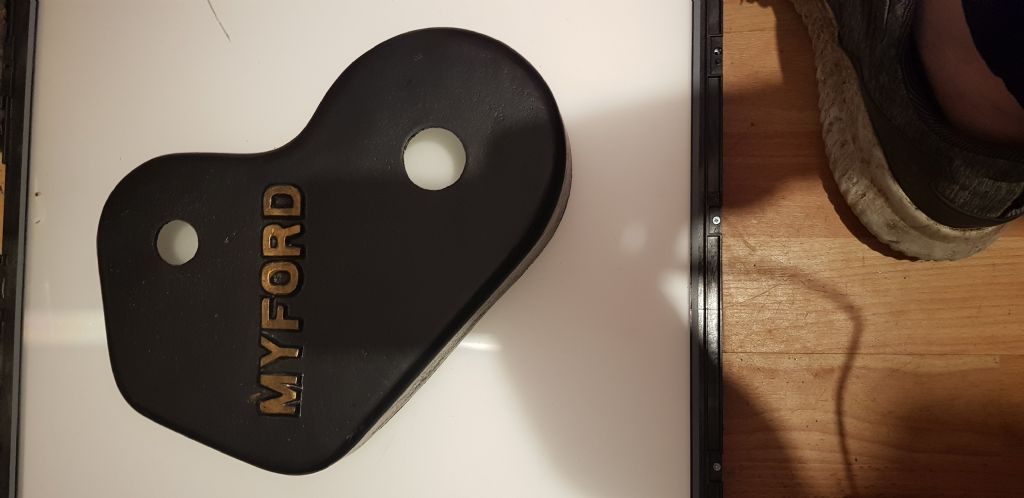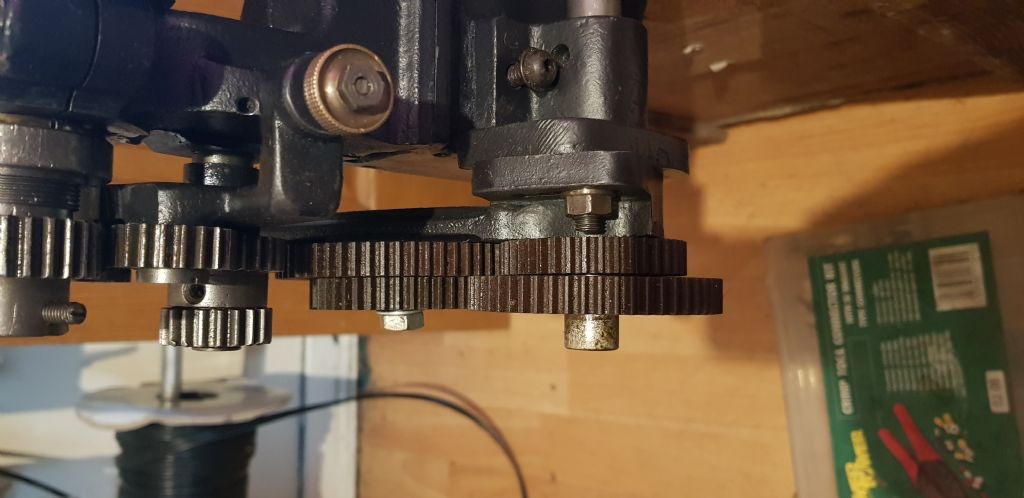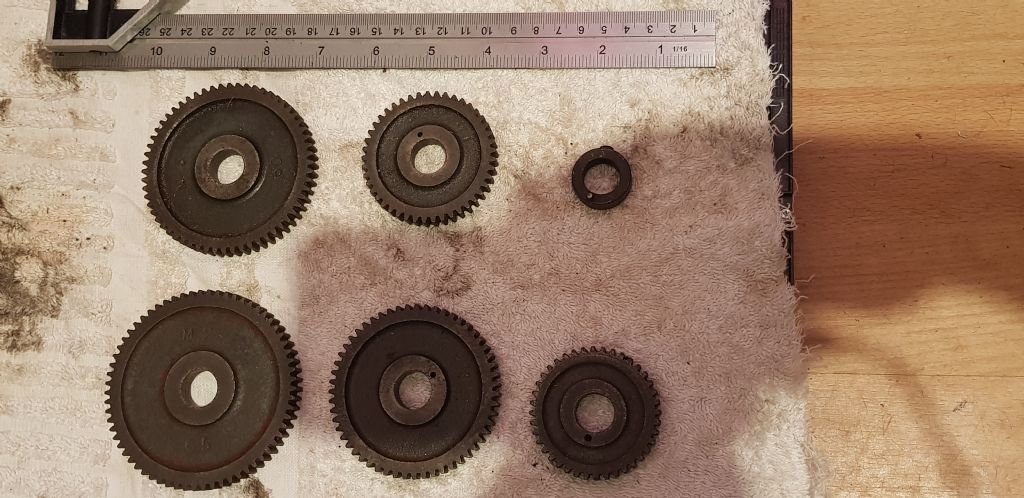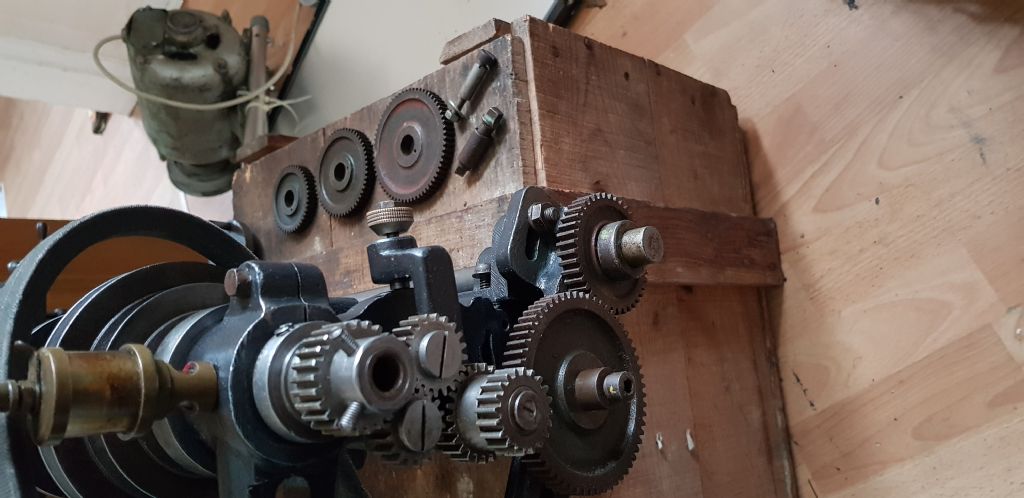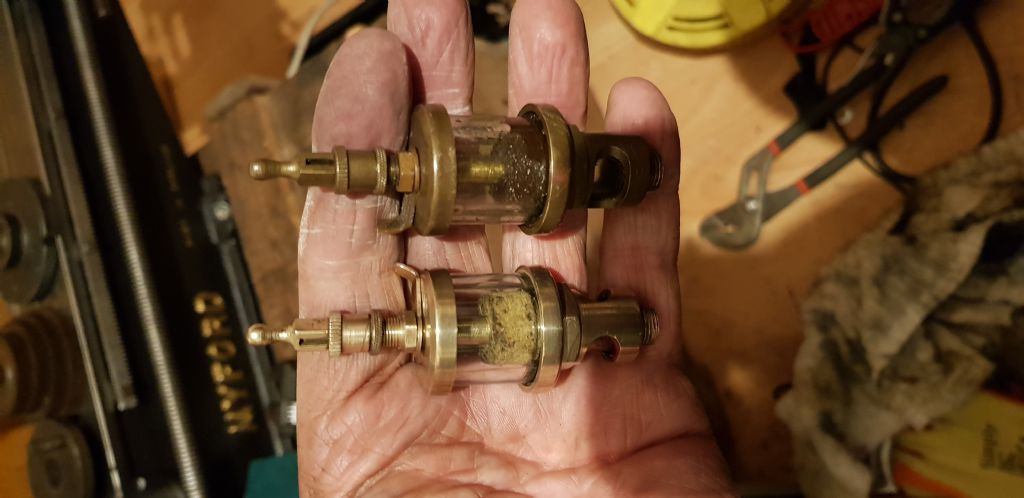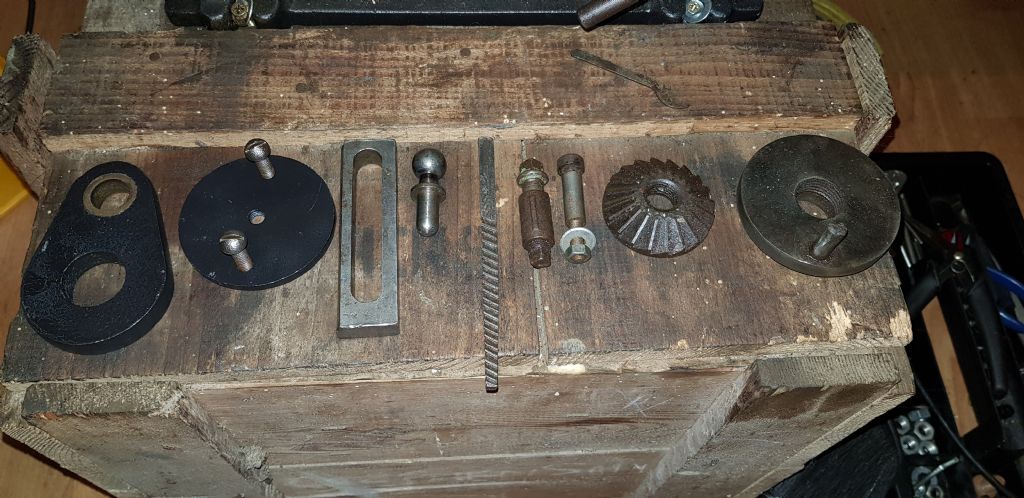Thank you for the tip, Nick.
'
John,
Re your Question about spacers.
A bit difficult to see from the angle of that photo, but the gear set does look a bit odd. I assume one of the wheels on the lead-screw is acting only as a spacer, well clear of the one opposite it.
The change-wheels should run on specially-made stub-axles often called "studs", with a threaded spigot on the inner end to go through the long slot in the banjo (the long arm), and be secured by a suitable washer and nut.
The banjo also has two radial slots so it can be swung to mesh different diameters of wheel.
With only one intermediate stud, as you show, you can use only 2 meshed pairs: pinion + CW1, CW2 + CW3. (CWs 1 and 2 are pinned together on the stud.)
Following approximately the set-up shown, number the change-wheels 1 to 3, in driving order from spindle to lead-screw. Assuming only one of the lead-screw wheel in the picture is actually meshed, with the other just being a spacer….
As set there, the drive pinion following the reverse tumbler pair should mesh with the first change-wheel, so that would have to be stood off the banjo face by a longer stud.
I am not familiar with the ML4 (mine is an ML7) but my guess is that the stud would have a large flange on it which both helps it sit properly on the banjo face, and places the change-wheels in the correct planes. As you have it there, all the change-wheels are a displaced inwards by a gear thickness.
On the ML7, the change-wheels are put on hardened, keyed steel sleeves of length fractionally double one wheel thickness, and which run on the studs. The wheels have matching key-ways.
Your photo of the 5 wheels and spacer shows they are keyed together instead by small mild-steel pins set into the holes clear in the photo. (The Drummond lathe uses the same arrangement.) I don't know if the intermediate wheels on your lathe run on similar sleeves or directly on the studs.
To erect the required train with single intermediate stud; once you've selected the wheels for the appropriate overall ratio:
The drive pinion engages CW 1.
Lower the banjo to give you room to work on it.
Thread CW 2 first onto the first stud (or sleeve & stud) on the banjo, with a spacer behind it if the stud is not flanged, so the plane of its outer face is just behind that of the drive-pinion's inwards face.
Thread CW 1 onto the same stud, outside of CW2, with the driving-pin connecting them. (In practice it might be easier to pin them together first but the result is the same.). This should put CW1 and the drive pinion in line.
Fit the nut and washer, or screw and washer, on the stud's outer end to keep the wheels in place. Move the assembly towards the banjo slot's outer end, out of the way, for the moment.
Now set CW 3 onto the lead-screw with a spacer to ensure it is line with CW 2. There should be a grub-screwed spacer to hold the wheel on the shaft, and that spacer will also have a pin for keying to the wheel hence the shaft: yes, it is there, in the photo.
I don't know from the photo above if the grub-screw engages a keyway or shallow hole in the lead-screw end, hidden by being ""round the corner". It should do, to avoid bruising the lead-screw.
Now slacken the stud and the banjo nuts just enough to move things about. This is where having plenty of room to stand at the end of the lathe helps, as the next step can be fiddly.
Gently swing the banjo upwards while manipulating the intermediate stud, until each wheel meshes with its intended partner. They should run properly when the teeth are engaged with just light hand pressure. Nip the stud nuts and banjo nuts, test the set-up by turning the machine gently by hand (with the motor unplugged!); and when happy tighten them enough to hold the gear-train together in use.
Spacers: you can use a spare change-wheel as a spacer BUT ensure it won't foul another wheel and jam the lot up.
Well, that's found your first task for this lathe – making a proper intermediate stud and change-wheel spacers!
'
If you're setting this up to cut a thread, measure the first cut when it is no more than a fine scratch to ensure your change-wheel sums are right. (If you don't have the chart for the lathe.
'
(Or even if you do – yes, you've guessed how I know! I was using a Harrison L5 that caught me out with its feed-range gear-box.)
Edited By Nigel Graham 2 on 26/04/2019 22:34:18
JohnM.


 for cutting screw-threads of a range of pitches.
for cutting screw-threads of a range of pitches.